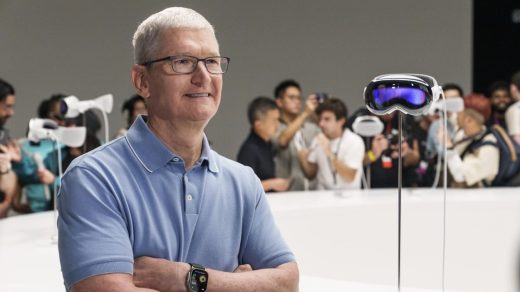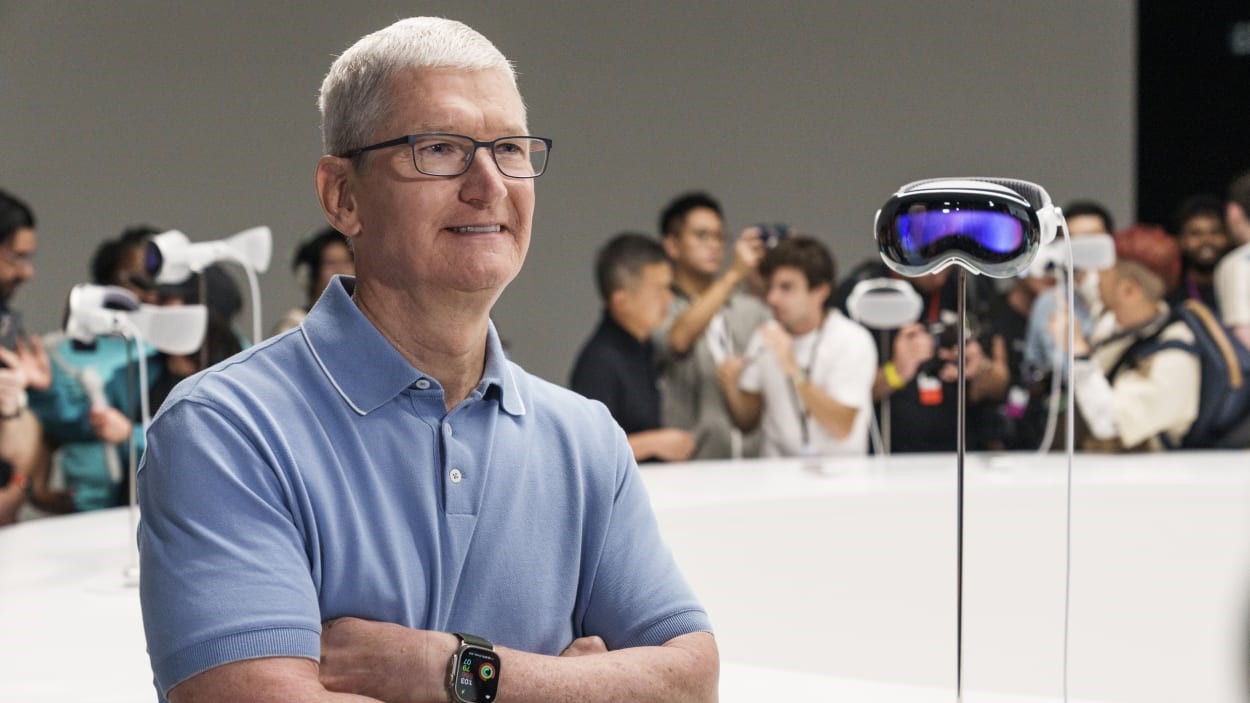With the Vision Pro, Apple has never depended more on developers for a product’s success
After months of anticipation, Apple’s Vision Pro will finally be released to the public on February 2. Sales projections for the headset don’t look too rosy, but in truth Apple is playing the long game here. For that reason, it’s not judging success by raw revenue figures—not yet, at least.
The initial success of Apple’s Vision Pro may be judged on how it fares with the developer class, and whether those developers are impressed enough with the headset to start building apps for it. The device certainly needs some killer apps: Given its current offerings, the Vision Pro’s $3,500 price tag will likely be too much for many consumers.
But Apple, unlike most tech companies, can afford to wait for years for the Vision Pro to make money, if need be. A Financial Times report last summer said Apple pared back its first-year sales expectations from one million units to just 400,000. “Apple will produce 60,000 to 80,000 units of Vision Pro for the February 2 release,” tweets Ming-Chi Kuo, a securities analyst with an oft-accurate view of Apple supply chains.
By all accounts, the Vision Pro is impressive, and Apple likely spared no expense making it so. Apple wanted to build a device that finally delivers on the promise of mixed reality after so many others have created experiences that are just OK. It sourced the very best component parts available—the high-definition lenses, processors, and special cameras. Those parts must be tiny and powerful, and unlike smartphone components, for example, which have been commoditized, XR components remain expensive.
Apple may have reasoned that at the current moment, when both developers and consumers are lukewarm on VR headsets, cost considerations are secondary to proving that mixed reality environments (or “spatial computing,” as Apple has asked employees and developers to call it) can be cool, polished, fun, and even useful.
In the Vision Pro marketing materials, you find people sitting on couches wearing something that looks like ski goggles. They stare up into space. They move their fingers to control content and apps that are invisible to the outside observer. They watch movies (on virtual screens that look movie theater-size), do work stuff on several screens that seem to hang in the room in front of them, and talk to loved ones using FaceTime.
Apple’s headset blocks the user’s direct view of the world and substitutes in a (very high-quality) digital representation of the real world (called a “passthrough” image) as captured by the device’s cameras. To create the spatial effect, the headset then mixes in 3D digital content with that passthrough image. A dial on top of the headset adjusts the relative levels of the two, from maximum mixed reality to fully closed-off, dark-theater mode VR.
Apple’s plan may be to win over developers, then work on driving the price of future versions of the headset down while retaining much of the high-quality experience. Who better than Apple to do that? The company’s reputation, buying power, and order sizes give it leverage in negotiating component costs and manufacturing rates.
Apple has been engaging the developer community with the Vision Pro more aggressively than in past product releases. It created a series of “test labs” in a number of countries so that developers could come in and try the headset, and even test their apps on it, reports Tripp Mickle in the New York Times. Apple seemed intent on gathering feedback from developers on the software experience and development environment, Mickle writes.
Not that it’s been entirely successful. As Apple scooper Mark Gurman reports at Bloomberg, some high-profile developers that have been quick to offer iOS apps in the past—including Netflix, YouTube, and Spotify—don’t appear to be readying apps for the Vision Pro, at least not at launch.
Traditionally, Apple drops into existing product categories (MP3 players, phones, etc.) with a product whose software and hardware work seamlessly together, and an ecosystem of apps and content behind it. In this case, the category itself could use a shakeup.
The market for XR headsets isn’t very big, and it’s been getting smaller. IDC says worldwide shipments of mixed reality devices (including both augmented reality and virtual reality headsets) declined by 8.3% in 2023 to 8.1 million units. But the firm is expecting a rebound in 2024. “The return to form is thanks to a full year’s availability of Meta’s Quest 3 as well as Apple’s Vision Pro, which is expected to bring lots of attention but will likely ship fewer than two hundred thousand units in the year,” IDC’s Ramon Llamas wrote in December. (That’s only half what Apple itself is reportedly expecting!)
If the estimates are correct the Vision Pro’s modest first-year numbers will be unique among Apple products. The Apple Watch sold an estimated 12 million units during 2015, the year of its launch. Analysts said the AirPods sold between 14 million and 16 million during the first year, 2017, then surged to 60 million in 2019. The original iPhone started small, with just 1.4 million sold in 2007, but that number had reached 230 million by 2015. The iPhone became the top-selling phone in China for the first time during 2023.
It’s been 13 years since the appearance of the first modern VR headset, the DK1 from Palmer Luckey’s Oculus Rift. Hopefully the Vision Pro will mark the moment when AR/VR headsets start to grow up. Even better, it may be the catalyst that fires up new technical breakthroughs that will lead to AR glasses that are svelt, see-through, and deliver a powerful spatial computing experience through the lenses.
(12)



